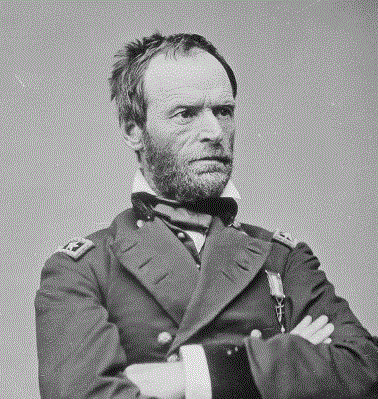Reservation Era Begins 1850-1878
1868
Dine’ (Navajo) internment ends with Treaty of Bosque Redondo, but 2,000‒3,500 die while imprisoned

General William T. Sherman is sent to create a treaty due to the soaring costs of maintaining the Navajo camp, both in terms of pilfering supplies and the actual costs of running the camp. Barboncito, a Dine’ leader, refuses to sign the treaty and demands the return of Navajo homelands in Arizona and New Mexico. The new reservation is only a tenth the size of the original lands and excludes prime grazing lands and nearly all of the water sources. During their captivity, White settlers move onto the prime land and water areas and destroy Dine’ agricultural fields and orchards. At least 2,000 Dine’ die while being interned at the camp, before General Sherman signs the treaty. In agreement to never resist or make war with the U.S. again, the U.S. government promises the Dine’ 13,000 sheep (2 per family), corn, flour, and food staples to help them re-establish their communities. In return, the Dine’ promise to not possess firearms or conduct raids and to send their children to White schools. Not surprisingly, the livestock and supplies never fully make it there and disappear en route (Nies, 1996) (Native Voices, “1868: Navajo internment ends, but 2,000 died while imprisoned”).